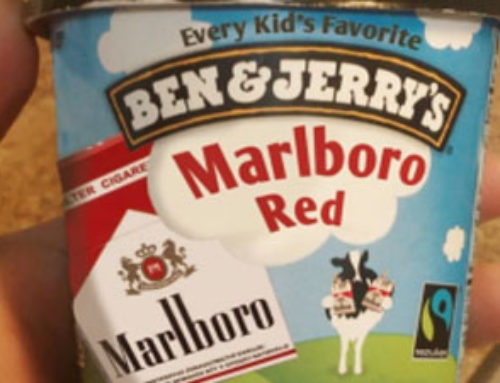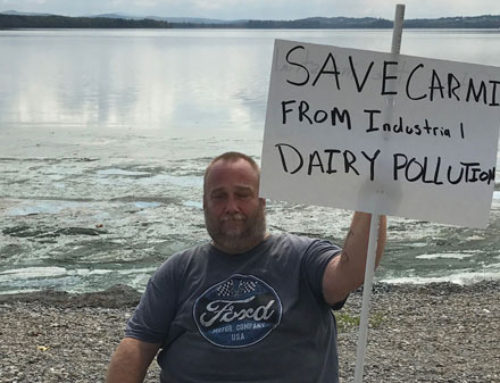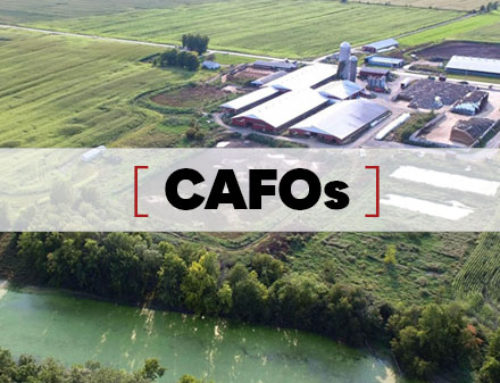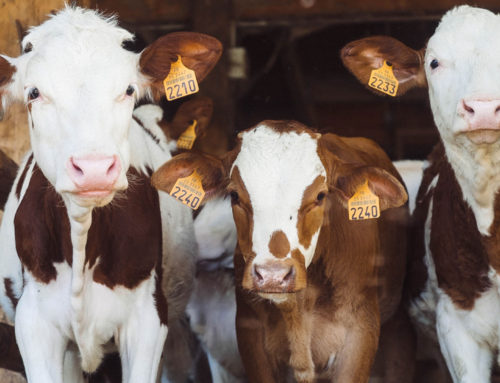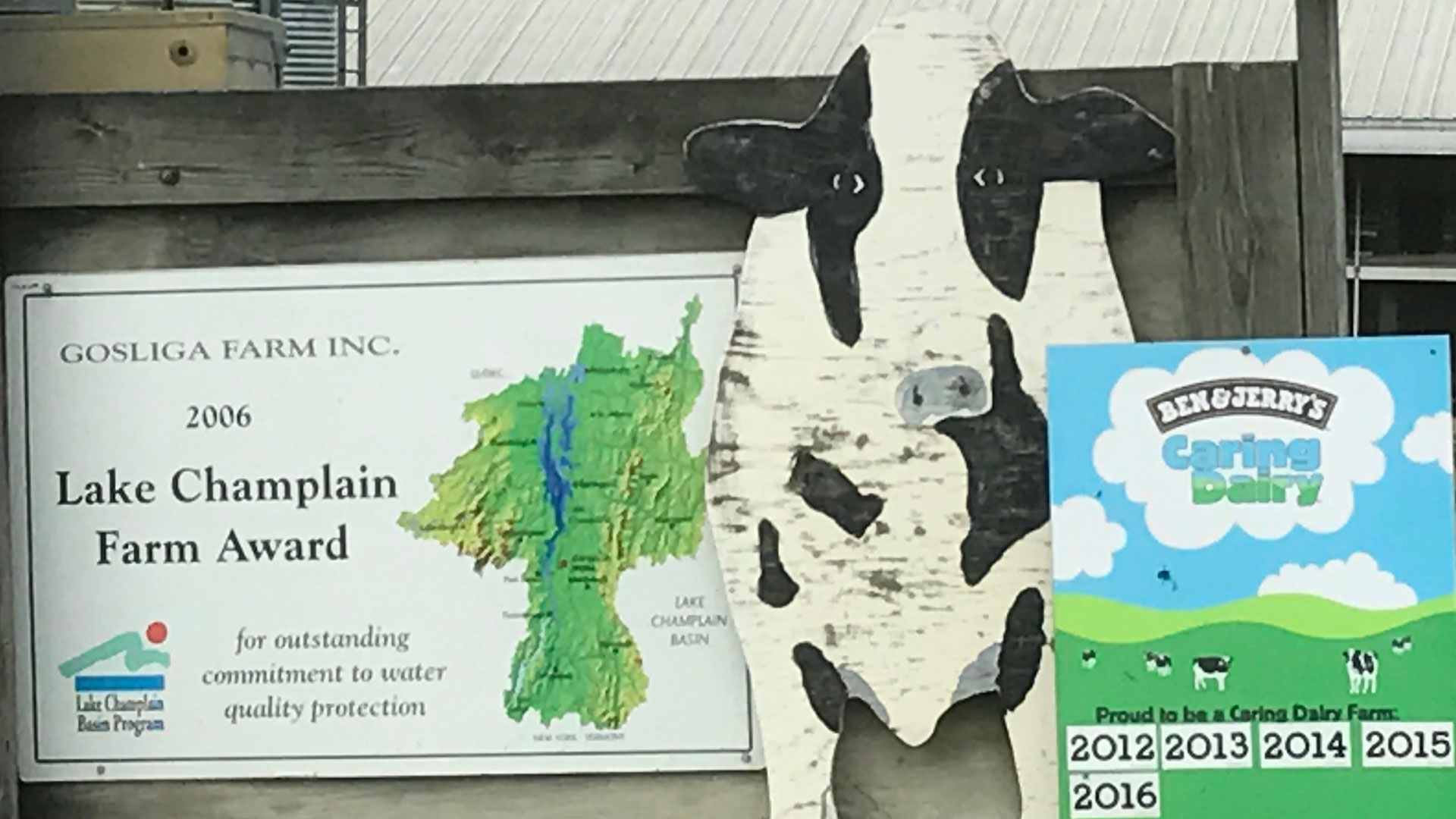
One of Ben & Jerry’s largest “Caring Dairy” farms was recently caught fudging its cow numbers to avoid state regulations, according to records obtained by Regeneration Vermont.
For more than 18 months, the Gosliga Farm in Addison misled state officials about its cow numbers, which kept them from being classified as a “large farm operation (LFO)” by the Vermont Agency of Agriculture, a classification that triggers significantly more regulation and oversight.
The revelation of this violation is irking residents of Addison County, where the farm is located, who for years have been plagued by a water quality crisis, largely the result of the expanding dairy operations.
The records obtained by Regeneration Vermont showed that for more than a year-and-a-half the Gosliga Farm reported fewer than 700 mature cows to remain classified as a “medium farm operation (MFO).”
This glaring omission allowed the farm to avoid, among other things, an annual state inspection, as required for LFOs. Additionally, according to the VT Nonpoint Source Enhancement Plan, “Unlike the MFO Program, LFO permits are individual to each farm and also regulate odor, noise, traffic, insects, flies, and other pests.”
But milk production records reviewed by the Agency of Agriculture showed that the farm had significantly more than 700 cows. The review triggered an “enforcement action” against the farm, requiring it to apply for an LFO permit and to comply with the farm regulations it had been skirting for at least 18 months.
If skirting Vermont regulations wasn’t bad enough, the Gosliga Farm also participates in what is alleged to be a deceptive “Caring Dairy” program run by Ben & Jerry’s. The voluntary program makes for good marketing talking points. But participants are subjected to little or no oversight, as proven by the Gosliga’s participation while violating the state’s most basic farming permits.
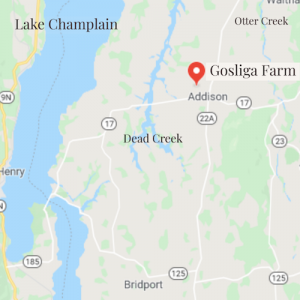 The farm suppliers of Ben & Jerry’s, including the Gosliga’s, are decidedly non-organic, whether the farms are voluntarily enrolled in its “Caring Dairy” program or not. As a result, the farms rely on GMO corn for feed, toxic pesticides like glyphosate and atrazine, routine antibiotic use, and climate-busting synthetic fertilizers.
The farm suppliers of Ben & Jerry’s, including the Gosliga’s, are decidedly non-organic, whether the farms are voluntarily enrolled in its “Caring Dairy” program or not. As a result, the farms rely on GMO corn for feed, toxic pesticides like glyphosate and atrazine, routine antibiotic use, and climate-busting synthetic fertilizers.
In 2018, the Organic Consumers Association (OCA) sued Ben & Jerry’s over what the nonprofit claimed to be consumer deception and fraud related to the corporation’s “Caring Dairy” claims. The suit is ongoing, in the Washington, D.C. Superior Court.
Last year, the D.C. Court rejected Ben & Jerry’s motion to dismiss OCA’s lawsuit, claiming there was plenty of merit for the case to carry on. The ruling cited, among other things, Ben & Jerry’s admission that it does not even segregate the milk from these “Caring Dairies” from the supposed “uncaring” dairies. In fact, milk from “Caring Dairies” is comingled with milk from other dairies that also ship the Ben & Jerry’s supplier, Dairy Farmers of America/St. Albans Co-op.
“The court concludes,” wrote Judge Neal E. Kravitz, “that the [OCA] complaint alleges facts sufficient to advance a plausible claim that consumers would be misled by Ben & Jerry’s labeling and marketing regarding the sourcing of its ingredients.”
Moreover, in filings made recently to the court, Ben & Jerry’s announced that it has begun to back away from at least one of its false and unverifiable claims central to its “Caring Dairy” greenwashing effort. According to lawyers for the Unilever-owned ice cream giant, Ben & Jerry’s will no longer declare on its packaging that its ice cream is derived from ”happy cows.”
This latest announcement marks a small step toward some truth. But Regeneration Vermont and OCA remain committed to convincing Ben & Jerry’s to truly do the right thing: Transition its farm suppliers to regenerative/organic production and assure its consumers that all the milk used for its ice cream is sourced from these farms.
Meanwhile, one of Ben & Jerry’s largest “Caring Dairies,” the Gosliga Farm, continues to operate as an unpermitted LFO while the Vermont Agency of Agriculture seemingly does everything it can to accommodate the farm’s rule breaking.
Without issuing penalties or even mild reprimands, the Agency has simply asked the farm to apply for an LFO permit. Given the Agency’s history of enabling the nefarious behaviors of these large farms, the Gosliga’s LFO permit process is expected to be little more than a formality. A decision expected any day.
Regardless of the agency’s lax enforcement, numerous local residents showed up to the agency’s public hearing in late November to oppose the farm’s expansion, and many more submitted written comments to the agency.
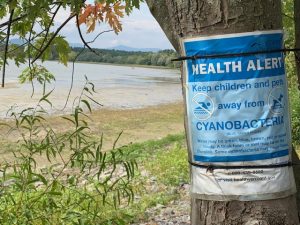 “Frankly, I am beyond incredulous that the [Agency of Agriculture] would even consider granting an LFO permit to an operation that willfully violated MFO and LFO rules,” wrote Dr. Mark Berger, M.D., a resident of Addison County’s Button Bay, on the shores of Lake Champlain. In testimony he submitted to the Agency opposing the farm’s LFO application, Berger wrote, “In life, past behavior is the best predictor of future behavior.”
“Frankly, I am beyond incredulous that the [Agency of Agriculture] would even consider granting an LFO permit to an operation that willfully violated MFO and LFO rules,” wrote Dr. Mark Berger, M.D., a resident of Addison County’s Button Bay, on the shores of Lake Champlain. In testimony he submitted to the Agency opposing the farm’s LFO application, Berger wrote, “In life, past behavior is the best predictor of future behavior.”
The Gosliga Farm’s expansion is typical of Vermont’s largest farms, where the biggest farms are getting bigger as the small and medium farms go bust. While Vermont has lost hundreds of small dairy farms in the last decade, the number of LFOs has more than doubled. The average size of these large CAFOs (concentrated animal feeding operations) is now nearly 1200 cows each.
Unfortunately, farms like the Gosliga’s are only following the “get big or get out” commodity model that regulators and politicians have been pushing for decades, an exploitive scheme that for years has paid dairy farmers less than the cost of production while multinational dairy corporations reap record profits.
The dramatic increase in the number and size of Vermont’s industrial dairies is concentrated primarily in just two counties, Franklin and Addison, both of which border Lake Champlain. This expansion has brought great damage to the hosting watersheds. The phosphorus-rich feed and fertilizers from these factory farms are leaching into the state’s increasingly volatile and unpredictable streams and brooks, jump starting toxic algal blooms, particularly cyanobacteria.
“Over the 16 years that I have had a residence on Lake Champlain,” continued Dr. Berger’s testimony, “I have witnessed the inexorable deterioration of our water quality . . . These cyanobacteria toxic-producing events are a direct result of unbridled and escalating LFO/CAFO run-off.”
Other concerned residents who have seen their quality of life threatened by the scale and proximity of these mega-dairies spoke out against the Gosliga Farm’s permit application during the public hearing, some refusing to be identified out of fear of reprisals.
One resident cited a recent resolution passed by the American Public Health Association (APHA) calling for a “moratorium on concentrated animal feeding operations.” Issued in November 2019, the resolution declared that “the large amounts of manure and other untreated waste created by concentrated animal feeding operations pose a threat to air quality, drinking water and human health.”
Indeed, according to the Gosliga Farm’s LFO permit application, this CAFO will produce approximately 10 million gallons of liquid cow manure annually, all of which will be spread within a watershed already considered to be in crisis, largely the result of phosphorus-rich manure run-off from farm fields. In fact, the Gosliga Farm’s own Nutrient Management Plan (NMP), obtained in a records request submitted by Regeneration Vermont, acknowledges that several of its GMO corn fields already have “high phosphorus-indexes” as a result of manure applications.
Given the Gosliga Farm’s rogue nature, it is nothing short of outrageous that, amidst a serious—and costly—water crisis, the Vermont Agency of Agriculture would even consider providing a new LFO permit to any farm within an impaired watershed, let alone a farm that has demonstrated that they are willing to break the rules.
And, to add insult to these potential environmental injuries, Ben & Jerry’s continues to call all of this “caring,” hoping, of course, that no one is paying attention.
– M. Colby
When we launched Regeneration Vermont, we knew that we had to reimagine, well, everything—from the nature of activism to the nature of agriculture. Our communities, our water, our soil, and our planet demand it of us. Our work is needed now, more than ever to shine a light on what’s happening downstream of Vermont’s factory farms. Consider making a donation to help us continue this important work in 2020 and beyond.
